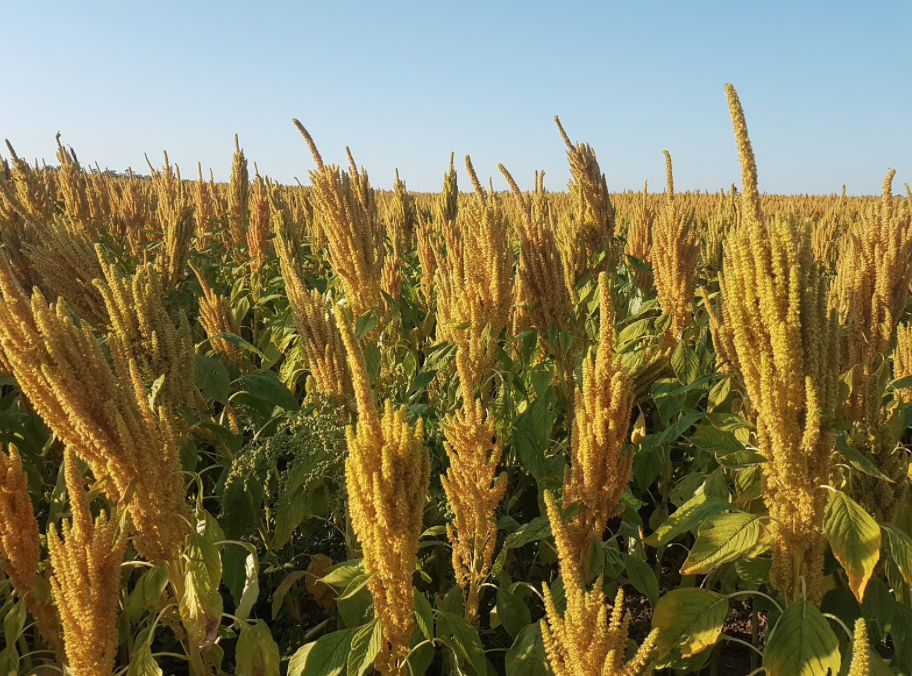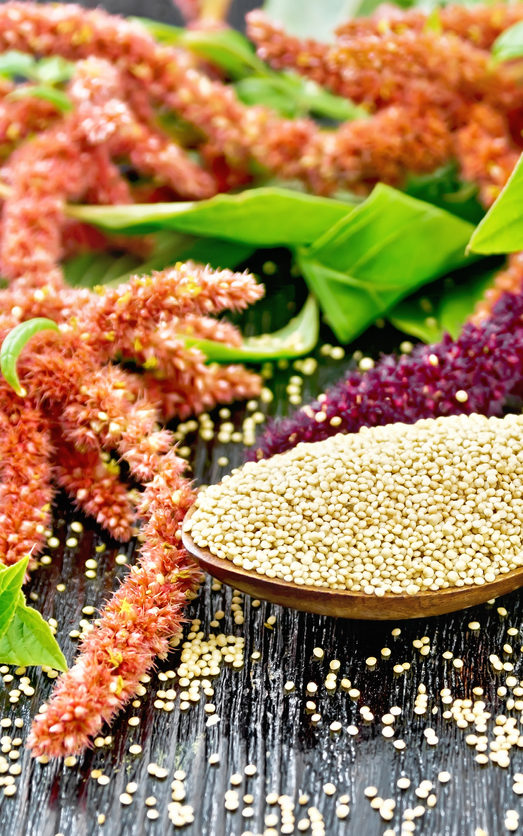The natural ingredient we are going to talk about today is considered one of the most complete foods of natural origin.
It is a small seed that has a myriad of benefits for our health. It is one of the most complete plant foods because of its high vegetable protein content. That's why today we want to focus on this plant native to Mexico and Central America that has a very long history. Do you dare to guess what it is?
What is amaranth?
Amaranth is a genus of plants that belongs to the family Amaranthaceae, within the genus Amaranthus L. spp.. There are approximately 70 species within the genus, some are cultivated as grains, others as vegetables and others as ornamental plants.

In fact, the Amaranthaceae family is the same family to which chard and spinach belong, so you can imagine what these plants may have in common with amaranth.
This plant with abundant leaves has flowers that vary from purple and red to orange and gold. It has been cultivated in Central America for more than 4,000 years, although it was already used in the town of Zohapilco (in about 5000 BC!).
Where do amaranth seeds come from?
Amaranth has historically been one of the staple foods of the indigenous people. While the Mayan culture considered amaranth as a food (which they called joy, tez or xtes, by the way), the Aztecs always linked this plant to religious rites.
Unfortunately, after the arrival of the Spanish Crown, amaranth grains were banned because they were a symbol of paganism. In 1577, the most important crop for the indigenous people was amaranth, but by 1890 it had practically disappeared.
Amaranth seeds are very similar to quinoa but smaller in size. They are obtained directly from the panicles or inflorescences of the plant.

Amaranth composition
As we mentioned in the introduction, amaranth is one of the most complete products of vegetable origin for human consumption.
It is a very important source of proteins, natural vitamins and minerals. Among these, folic acid, niacin, iron, phosphorus and calcium stand out, as well as vitamins A, B and C.
Because its grain has about 60% carbohydrates, it is most commonly classified as a pseudocereal. Pseudocereals are dicotyledonous species that produce seeds with a starch content and a physical appearance similar to that of cereals.
Per 100 grams of amaranth:
- 63.5 g of carbohydrates
- 13.6 g protein
- 6.7 g of fiber
- 7 g fat
Source: Veggaffinity
Benefits of amaranth consumption
Now that you know the chemical composition of amaranth seeds (or at least a little bit about them), let's see what each component provides you with:

- The presence of phenolics in amaranth and all the products derived from this plant give it an antioxidant effect.
- Its content of phytosterols such as beta-sitosterols help to maintain or reduce the levels of total cholesterol and LDL-cholesterol (bad cholesterol) without affecting HDL-cholesterol (good cholesterol).
- Folic acid helps cell regeneration and takes care of our internal tissues, as well as helping the formation of red blood cells. The only "problem" is that folic acid is water-soluble, and therefore your body is not able to store it, and the unabsorbed remains are eliminated in the urine. This means that you must consume it on a regular basis.
- Niacin is a B vitamin that helps increase good cholesterol and lower triglyceride levels.
- Iron, as you probably already know, is essential for your body to make hemoglobin. At the same time, hemoglobin is essential for moving oxygen from the lungs to different parts of your body, so you can already get an idea of how necessary iron is in your diet.
- Phosphorus also fulfills a very important function in our body, which is none other than the formation of bones and teeth. It also helps in the correct functioning of cell membranes.
A very relevant note here is that while a deficit of a particular vitamin or mineral may affect your health negatively, a surplus will not have a positive effect either.
Let's take an example to make it clearer: consuming less iron than you should can cause anemia, but consuming more than the recommended amount will not make you a superhero. On the contrary... A high iron intake can cause toxic damage to your liver, joints and heart.
And, as is the case with iron, so it is with many other components. Of course, there are exceptions, such as folic acid (it has been shown that an excessive intake of B9 or folic acid does not cause any harm). In any case, it is always necessary to consult a specialist before taking vitamin supplements on a regular basis. It is not always recommended.
Studies have shown that Amaranth has a wide range of health properties such as: anti-inflammatory, antioxidant, hypoglycemic, hypocholesterolemic, hypocholesterolemic, antihypertensive, effect on liver function, antianemic, antiallergic, immune system regulator and antitumor.
How to prepare amaranth at home
Amaranth seeds can be consumed in several ways. Sprouted, turned into flour, roasted, boiled, swollen and more. In fact, there is something we haven't told you yet, and that is that the leaves of this plant are also edible.
Remember that amaranth is from the same family as plants such as chard or spinach, so it should not be surprising to learn that its leaves are eaten.
The first step to consume amaranth seeds is essential: wash them well.
Being a pseudo-cereal, amaranth seeds can be cooked in a very simple way. You only need to prepare them in the same way you cook rice or quinoa.
In some areas of the world it is very common to consume the amaranth plant (the leaves) steamed, as they do in India. There it is known as 'laal math' or 'chawli leaves'. It is also popular to eat it grilled, especially in China, where it is called 'yin choy' or 'Chinese spinach'.
In addition, amaranth seed has been used in multiple applications such as bakery products, binder for hamburgers, salad dressing, creams, sauces and even to obtain vegetable beverages.
It is important to mention that in each case it may be an amaranth plant of a different species. In Qomer we commercialize Amaranthus Caudatus seeds.
In Qomer you will find organic and/or conventional amaranth seeds. Perfect seeds for a vegetarian and vegan diet. Suitable for gluten-free or celiac diets. Our amaranth seeds are produced in LAC (Latin America and Caribbean) and Asia. Contact us for more information!





